King’s pawn openings start with the move 1.e4. White immediately controls the centre and opens lines for his pieces. World Champion Bobby Fischer called it “best by test”.

Why play King’s pawn openings?
- It is aggressive in nature, and the ideas are straightforward, unlike Queen’s pawn openings.
- The move 1.e4 gains space in the centre and opens lines for the Queen and f1 bishop simultaneously.
- If you want to enter the tactical world of chess and sacrifice materials to win games, 1.e4 will suit you!
Major Variations in King’s Pawn Opening
King’s Pawn opening starts with the move e4. There are many variations in King’s Pawn opening. Some of the major King’s Pawn Openings are:
- Sicilian Defense
- The Ruy Lopez
- Italian opening
- King’s Gambit
- Vienna Game
- The Petrov defense
- Caro Kann defense
- Alekhine defence
- Scandinavian defense
- Pirc/Modern defense
- Owen’s defense
- Nimzowitsch Defense
Sicilian Defence:
This opening starts after the move 1…c5 from black. This is a very aggressive opening where black wants to play for a win from move 1. Black gains space in the centre and create an imbalance right from the beginning. Black aims to exchange white’s d pawn with his c pawn and gain a central majority, which is a long term advantage.
1. Sicilian Dragon Variation
This variation starts after 1.e4 c5 2.Nf3 d6 3.d4 cxd4 4.Nxd4 Nf6 5.Nc3
Here black plays 5…g6. His main piece in this variation is his dragon bishop which he will place on g7.
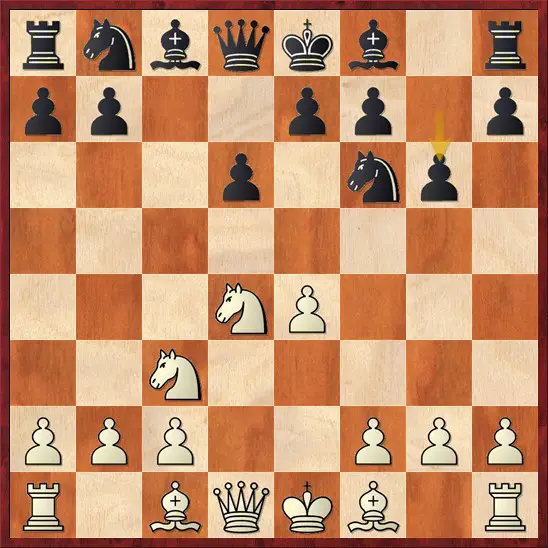
2. Sicilian Najdorf variation
1.e4 c5 2.Nf3 d6 3.d4 cxd4 4.Nxd4 Nf6 5.Nc3 a6 is the move order of this variation. This variation is most common in top-level chess and is a firm favourite of France no 1 Maxime Vachier Lagrave.

3. Sicilian Scheveningen Variation
It starts with 1.e4 c5 2.Nf3 d6 3.d4 cxd4 4.Nxd4 Nf6 5.Nc3 e6
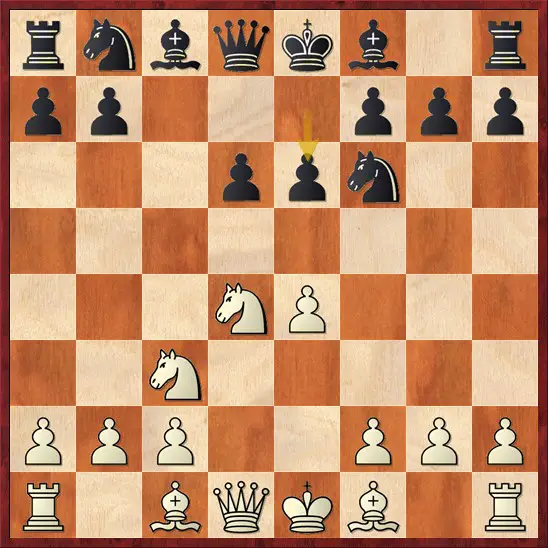
This variation is a bit rare nowadays though it can be seen at the club level from time to time. Garry Kasparov had championed this variation, and he mostly used it in the world championship matches against Anatoly Karpov.
4.Sicilian Richter Rauzer Variation
1.e4 c5 2.Nf3 d6 3.d4 cxd4 4.Nxd4 Nf6 5.Nc3 Nc6
This is the starting position of this variation. Play often transposes to some kind of Najdorf or Scheveningen.
5. Sicilian Moscow Variation
Many players play this line to avoid the main lines of the dragon and Najdorf. It starts with 1.e4 c5 2.Nf3 d6 3.Bb5+
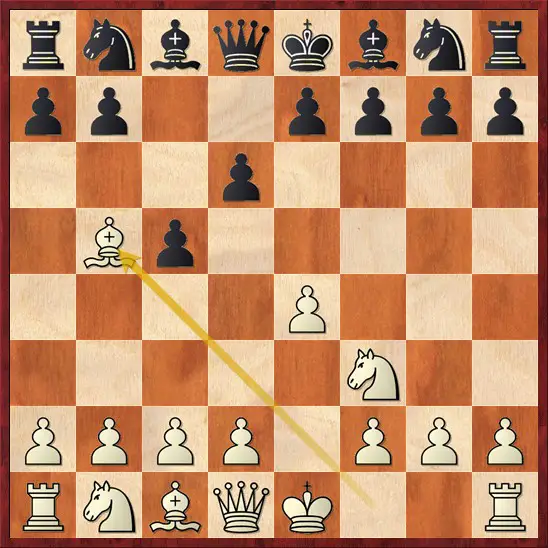
This opening is a firm favourite of World Champion Magnus Carlsen and is played by many top players. Here black can counter the check with 3 moves, 3…Nd7 which is the most fighting, 3…Bd7 which is supposed to be drawish and 3….Nc6 which is very flexible.

6.Sicilian Kan variation
1.e4 c5 2.Nf3 e6 3.d4 cxd4 4.Nxd4 a6
This is the move order of this variation

Here black rush to play a6 to stop Nb5. This opening allows black to be very flexible based on where white moves. White can continue normal development with 5.Nc3 or Bd3 to prepare for a kingside castle.
7. Sicilian Taimanov Variation
In this variation, black leaves an open diagonal for the dark-squared bishop and places the queen on the semi-open c file. The queen also stops e4-e5 by white in some cases!
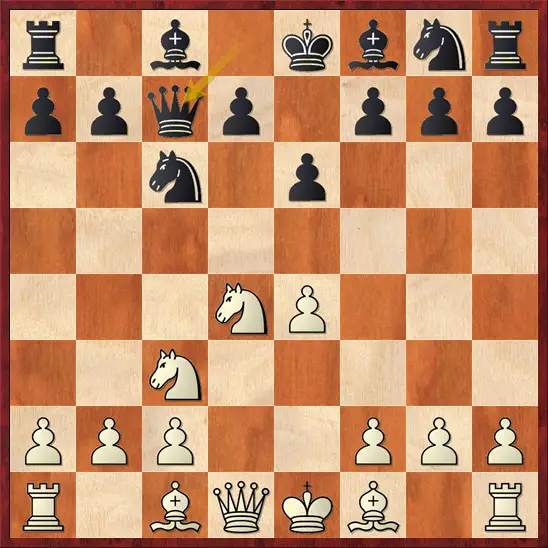
8. Sicilian Pelikan Variation
1.e4 c5 2.Nf3 Nc6 3.d4 cxd4 4.Nxd4 Nf6 5.Nc3 e5
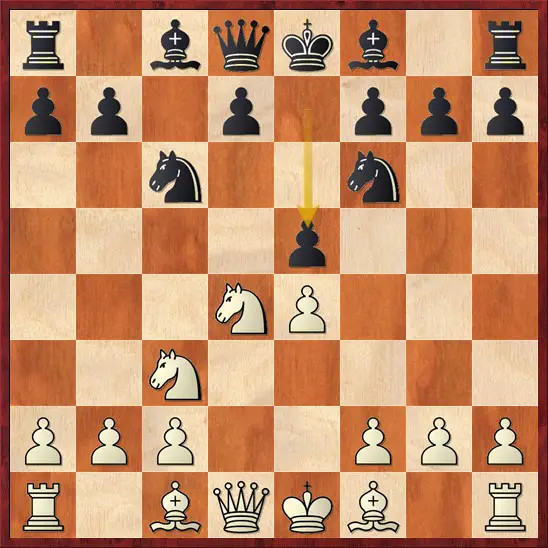
This is the starting position of this variation. Black accepts doubled f pawns in the mainline and hopes to create counterplay on the g file.
9. Sicilian Kalashnikov variation
The starting position of this variation arises after 1.e4 c5 2.Nf3 Nc6 3.dx cxd4 4.Nxd4 e5

In this opening, Black makes an immediate attack on the d4-night, forcing it to leave its central post. The Kalashnikov is very similar to the Sveshnikov, and sometimes it simply transposes.
10. Sicilian Accelerated Dragon
1.e4 c5 2.Nf3 Nc6 3.d4 cxd4 4.Nxd4 g6
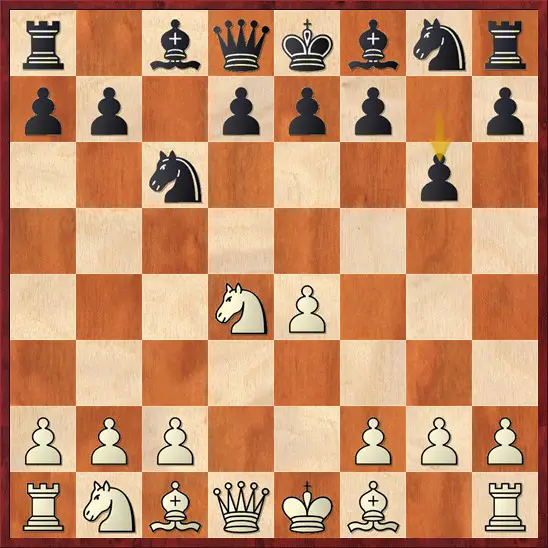
This is the starting position of this variation. White often plays 5.c4 and aims for a Maroczy structure. Black’s position is rather passive, but he is very solid in this variation.
11. The Rossolimo variation
After 1.e4 c5 2.Nf3 Nc6, white can avoid the main lines and put pressure on black by playing 3.Bb5. White wants to double black’s pawns and aims for a positional game.

12. Sicilian O’Kelly variation
This is a slightly dubious line of the Sicilian defence but is playable at the club level.
1.e4 c5 2.Nf3 a6 is the move order of this variation.

Black decides not to show his cards and act according to white plays.
13. Closed Sicilian
This variation starts after the moves 1.e4 c5 2.Nc3 Nc6 g3
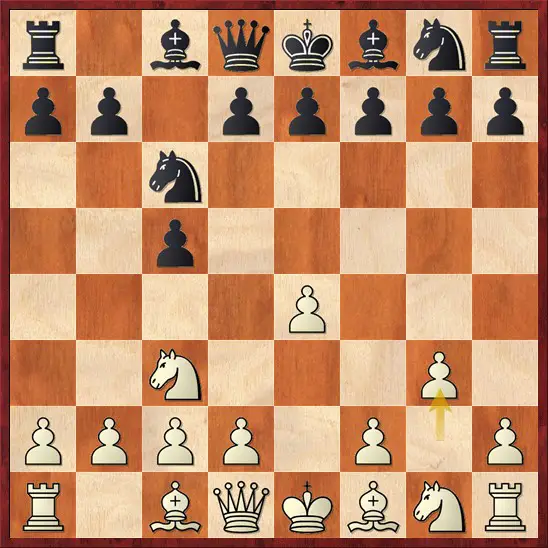
The mainline goes 3….g6 4.Bg2 Bg7 5.d3 d6 6.Nge2.
White places his king’s night to e2 to make way for the f pawn. White aims to play for a rapid kingside attack in this variation.
14. Grand prix attack
1.e4 c5 2.Nc3 Nc6 3.f4
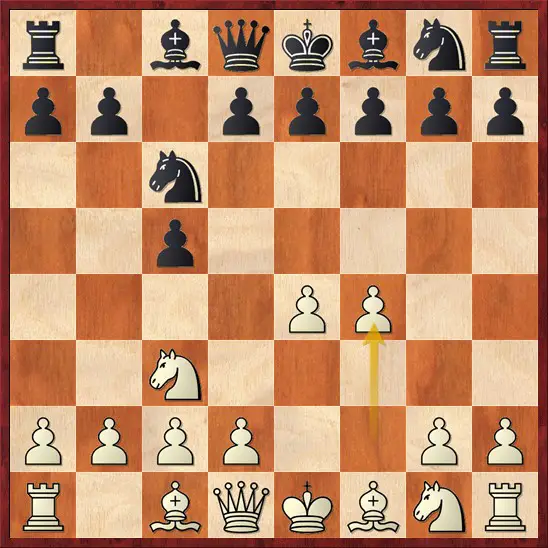
This is the starting position of the Grand Prix attack. This opening is mainly popular at the club level where players try to avoid theory. The mainline runs 3…g6 4.Nf3 Bg7 5.Bb5 Nd4 6.0-0 Nxb5 7.Nxb5 d5 8.exd5 a6 9.Nc3 Nf6 10.d4 c4 And black is slightly better in this position with the two bishops.
15. Sicilian Alapin variation:
This is another variation that starts after 1.e4 c5 2.c3
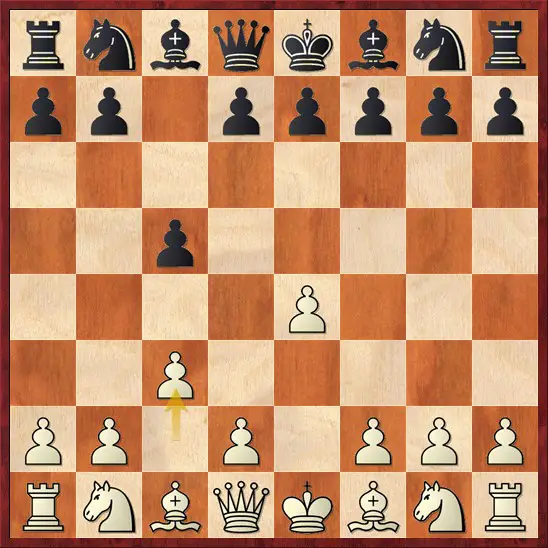
White usually aims for an Isolated Queen’s pawn structure in this variation. 2…d5 and 2…Nf6 are the two main moves in this position, which lead to interesting play for black.
16. Smith morra gambit:
This is a gambit line which starts with 1.e4 c5 2.d4

White offers a pawn to gain a quick lead in development. However, it is proved that black should be better if he is well prepared.
17. Wing Gambit:
It starts with 1.e4 c5 2.b4!

White sacrifices a pawn and follows up with another, opening lines on the queenside. White basically aims for a Benko gambit type queenside play for the pawn. This line is very less explored, and still, there is a lot to be revealed.
Openings after 1…e5:
For a long time in chess history, 1.e4 e5 was by far the most common way for a chess game to begin. 1….e5 is the reply which is usually taught to beginners because the ideas are easy to learn. By pushing the pawn to e5, black gains the same amount of space as that of white so he cannot be worse!
2. The Ruy Lopez:
The Ruy Lopez or the Spanish Opening is the most popular King’s pawn opening and is played from club level to World Championship matches. After 1.e4 e5 2.Nf3 Nc6 3.Bb5, the first branch occurs straight away since Black has to decide whether to push White’s bishop back with 3…a6. Advancing a pawn in Black’s usual choice, but there are several alternatives.
1. The Berlin defence:
1.e4 e5 2.Nf3 Nc6 3.Bb5 Here black plays 3…Nf6. This is a good choice for players who want to play solid chess and want a draw.
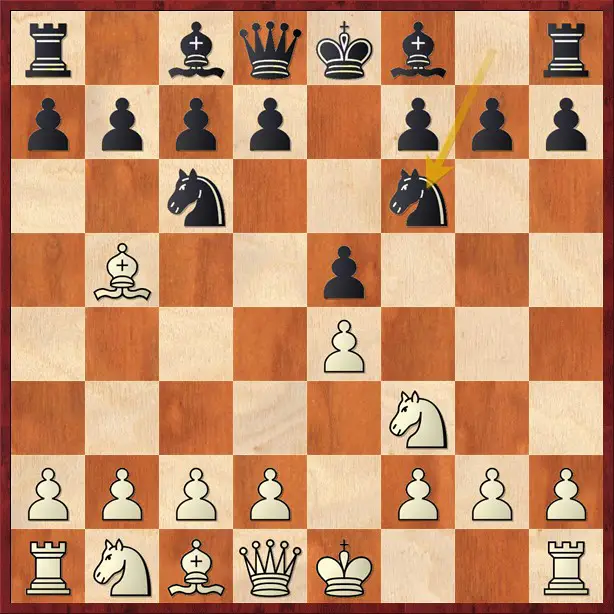
This line is adopted by many of today’s top grandmasters.
2.The Schliemann Variation:
This is a very sharp variation and arises after the moves 1.e4 e5 2.Nf3 Nc6 3.Bb5 f5

Black sacrifices a pawn temporarily and aims to create counterplay down the f file at a later stage.
3.The Smyslov defence:
Smyslov defense have the moves 1.e4 e5 2.Nf3 Nc6 3.Bb5 g6
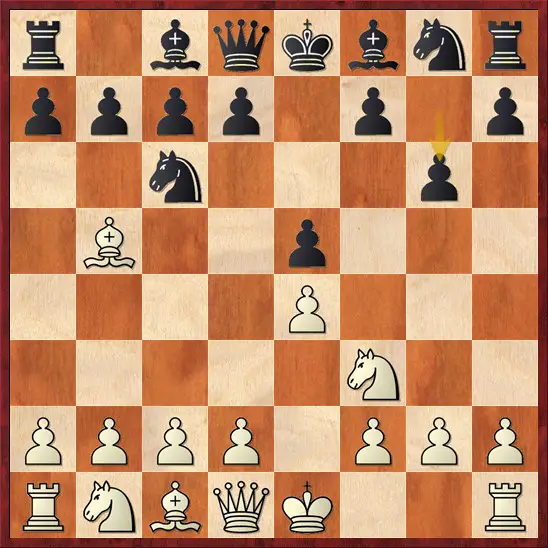
This is a quiet positional system named after Vassily Smyslov. It became popular in the 1980s when it was shown that 4.c3 a6! It gives black a decent game.
There are many other possible 3rd moves for black such as Bird’s defence (3..Nd4), and Steinitz defence (3…d6) which are not popular today.
Main lines after 3….a6:
The exchange variation:
1.e4 e5 2.Nf3 Nc6 3.Bb5 a6 4.Bxc6 dxc6

This is the starting position of the exchange variation championed by Bobby Fischer. By doubling the pawns, white wants to go to an endgame and use his kingside pawn majority.
Steinitz defence deferred:
This variation arises after 1.e4 e5 2.Nf3 Nc6 3.Bb5 a6 4.Ba4 d6
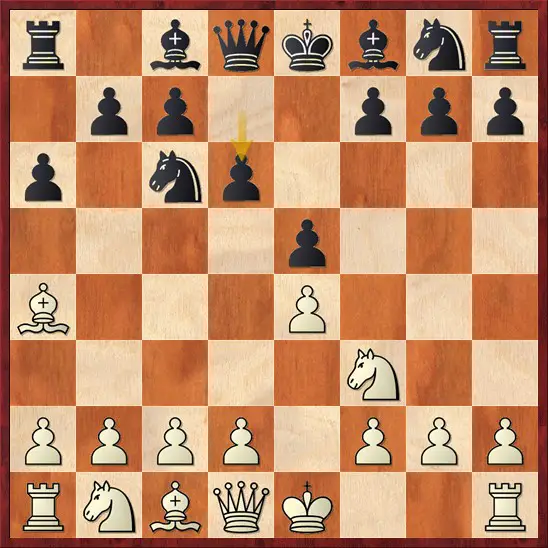
Here white has the aggressive 5.Bxc6+, the flexible 5.0-0 and the popular 5.c3. White is supposed to have a small advantage in all the lines.
The Arkhangelsk variation:
This is a very aggressive line for black and arises after 1.e4 e5 2.Nf3 Nc6 3.Bb5 a6 4.Ba4 Nf6 5.0-0 b5 6.Bb3 Bc5
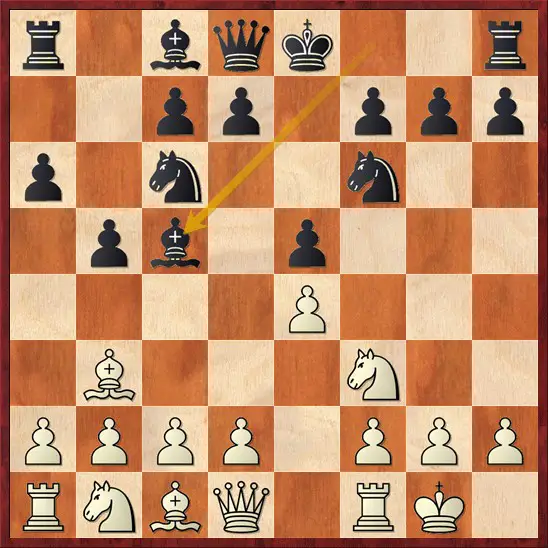
It is one of the best ways for black to fight for an advantage early on because the line is very theoretical. Fabiano Caruana often plays it at the top level.
Spanish Open defence:
1.e4 e5 2.Nf3 Nc6 3.Bb5 a6 4.Ba4 Nf6 5.0-0 Nxe4
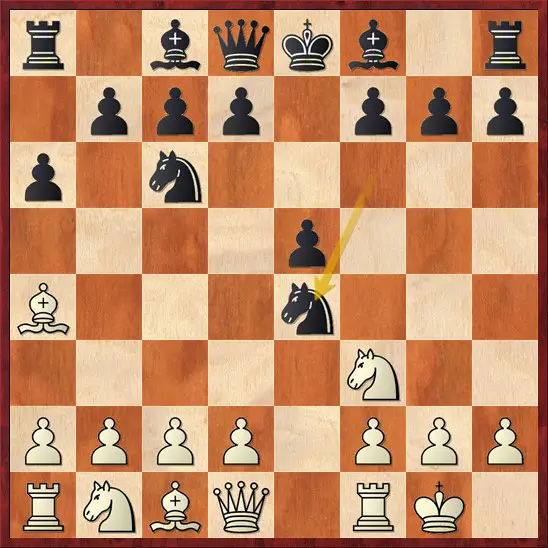
In this variation black gets active piece play in return for structural defects.
5. The d3 Spanish:
These lines occur after 1.e4 e5 2.Nf3 Nc6 3.Bb5 a6 4.Ba4 Nf6 5.0-0 Be7 6.d3

Now we enter the territory of the Spanish closed structure. The d3 Spanish is very flexible and is very popular at the top level currently. However, with accurate play black should be equal in all the lines.
6. Spanish Marshall attack:
This is another very aggressive line for black which arises after 1.e4 e5 2.Nf3 Nc6 3.Bb5 a6 4.Ba4 Nf6 5.0-0 Bel 6.Re1 b5 7.Bb3 0-0 8.c3 d5 9.exd5 Nxd5 10.Nxe5 Nxe5 11.Rxe5 c6
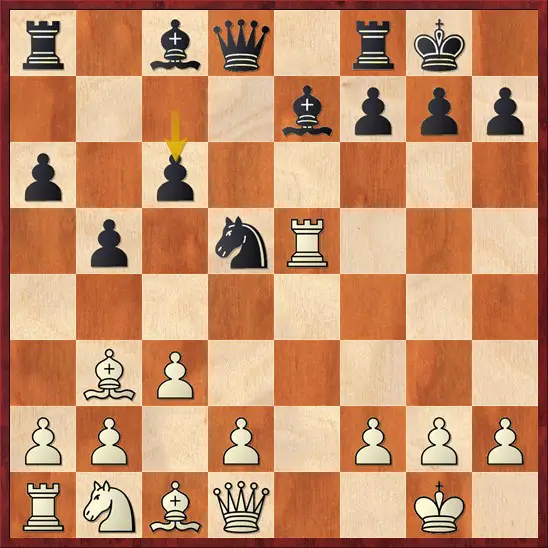
Black sacrifices a pawn to get attacking chances on the kingside so that white’s queenside pieces remain out of play for a long time.
The main line runs 12.d4 Bd6 13.Re1 Qh4 14.g3 Qh3 15.Be3 Bg4 16.Qd3 Rae8 17.Nd2 Re6
And still, there is a lot of theory!
7.Spanish Anti-Marshall varfiation:
1.e4 e5 2.Nf3 Nc6 3.Bb5 a6 4.Ba4 Nf6 5.0-0 Be7 6.Re1 b5 7.Bb3 0-0
To avoid the Marshall variation here, white players play 8.a4
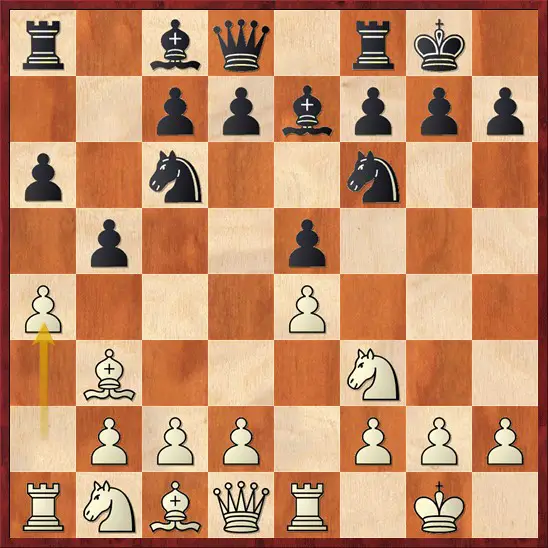
Here black has moves like 8…Bb7 and b4.
8. Spanish closed Zaitsev variation:
The move order of this variation is 1.e4 e5 2.Nf3 Nc6 3.Bb5 a6 4.Ba4 Nf6 5.0-0 Bel 6.Re1 b5 7.Bb3 d6 8.c3 0-0 9.h3 Bb7
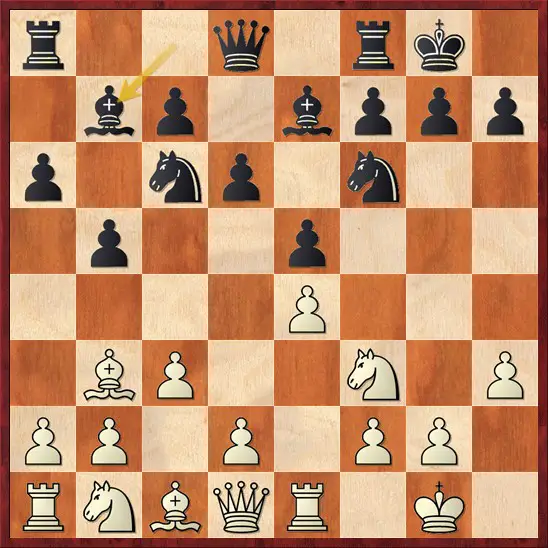
This variation is a firm favourite of World Champion Anatoly Karpov. It has a lot of theory, and both sides have to be very much prepared before playing this line.
9. Spanish closed Breyer variation:
It arises after 1.e4 e5 2.Nf3 Nc6 3.Bb5 a6 4.Ba4 Nf6 5.0-0 Be7 6.Re1 b5 7.Bb3 d6 8.c3 0-0 9.h3 Nb8
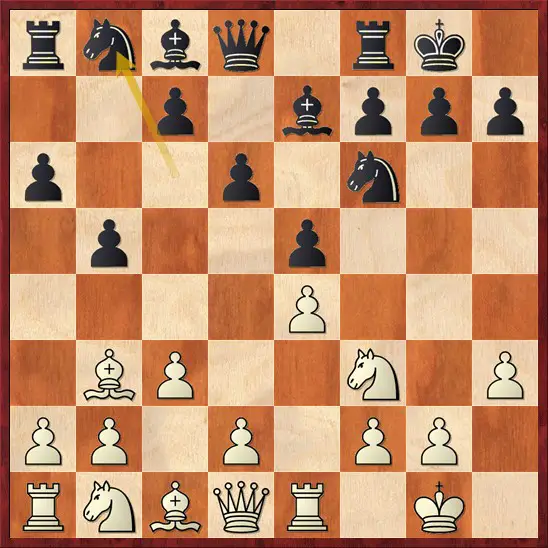
Here black argues that his night was misplaced on c6 so he decides to reroute it to d7 where it can find greener pastures. Again, this line is very theoretical, and at times the theory goes up to moved 30!
The mainline runs 10.d4 Nbd7 11.Nbd2 Bb7 12.Bc2 Re8
With accurate play, black should be equal.
10. Spanish closed Chigorin variation:
This line arises after 1.e4 e5 2.Nf3 Nc6 3.Bb5 a6 4.Ba4 Nf6 5.0-0 Be7 6.Re1 b5 7.Bb3 d6 8.c3 0-0 9.h3 Na5 10.Bc2 c5
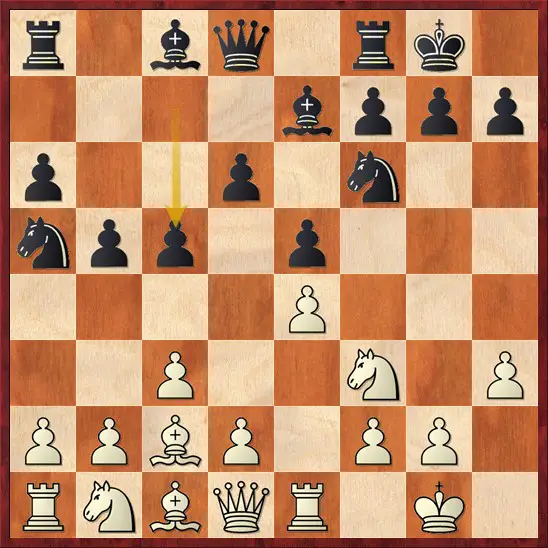
Black plays …Qc7 and tries to create threats on the c file. White on the other hand generally focuses on the kingside and argues that black’s night is misplaced on a5.
3. Italian opening:
This opening is also known as Gioco Piano. It starts after the moves 1.e4 e5 2.Nf3 Nc6 3.Bc4

This is one of the oldest openings. It is very common at the top level nowadays. 3….Bc5 and 3…Nf6 are the two main moves.
After 3…Bc5 4.c3, 4.b4, 4.0-0 are some moves.
After 3…Nf6 4.Ng5 is the Max Lange Attack.
4. King’s Gambit
The King’s gambit starts with 1.e4 e5 2.f4
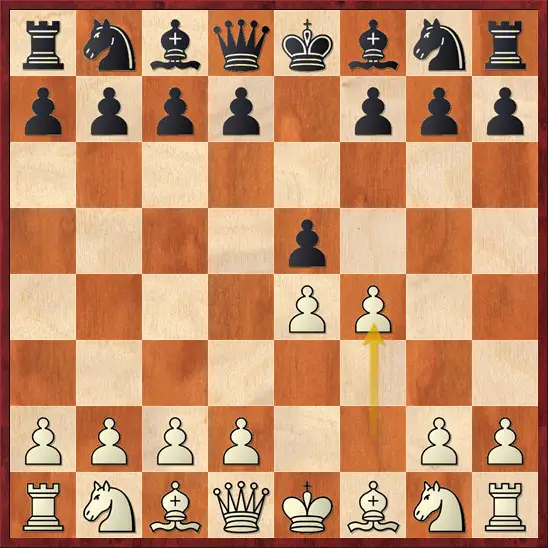
White offers a pawn to open lines and divert the e pawn. This is a very sharp line, and both players should be well prepared. The mainline runs 3.Nf3 g5, this is black’s most ambitious response. Black simply accepts the sacrificed pawn and reinforces it with …..g5.
5. Vienna Game
This opening starts after 1.e4 e5 2.Nc3
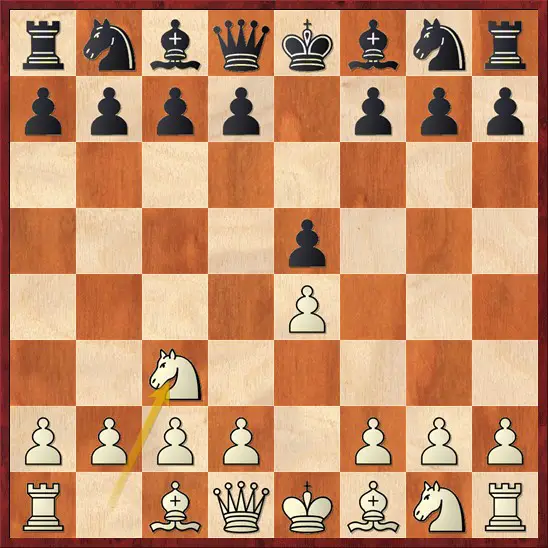
White’s second move is less common than 2.Nf3. The original idea of this opening was to play a delayed King’s gambit with f4 (the Vienna Gambit), but in modern practice White often plays more quietly, especially fianchettoing his King’s bishop with g3 and Bg2.
6. The Petroff defence
This opening starts after the moves 1.e4 e5 2.Nf3 Nf6
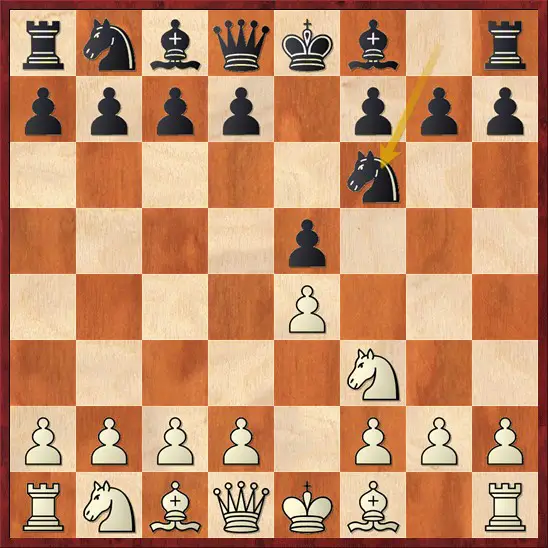
This is a very drawish opening and is referred to as “dull”. The structure remains rather symmetrical with only one file in between. White can play 3.Nxe5 and 3.d4.
Other defences apart from 1….e5 and 1….c5 which are less common:
7. Caro Kann defence
The Caro Kann defence starts with the moves 1.e4 c6. The only difference between the French and the Caro Kann is that in the French the c8 bishop stays inside the pawn chain. But in the Caro Kann, the c8 bishop goes out of the pawn chain very early.
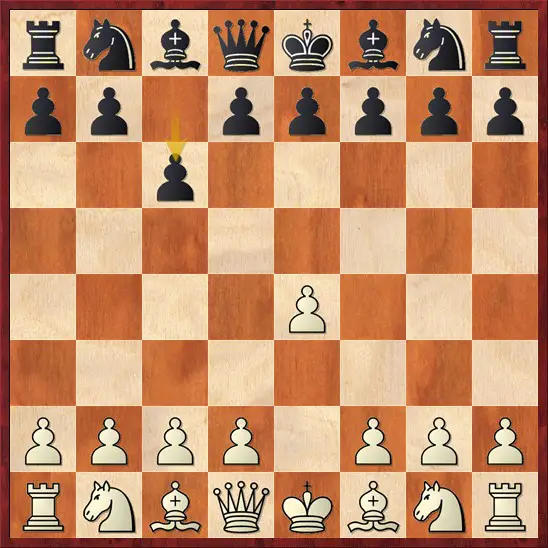
The Caro Kann is a very solid opening for black. It often leads to good endgames for Black, who has the better pawn structure.
8. Alekhine defence
This opening arises after 1.e4 Nf6. It is another opening which issues an immediate challenge to White’s e4 pawn.
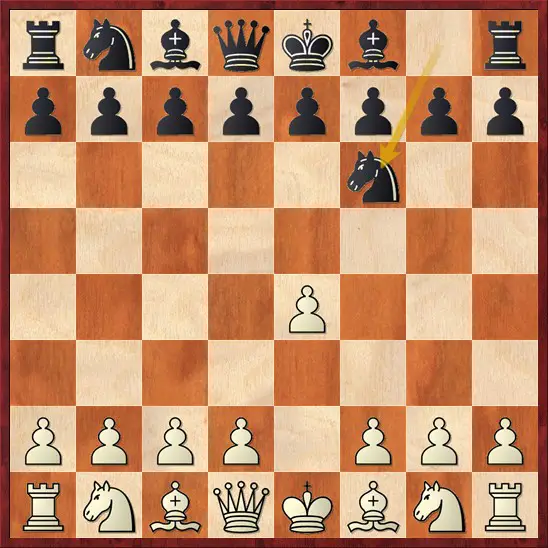
Black lures White’s pawns forward in the hope of then proving them weak, but most players believe that White is too much space.
9. Scandinavian defence
After 1.e4 d5, Black opens lines after for his pieces, enabling him to develop quickly. The price black pays is a loss of time.
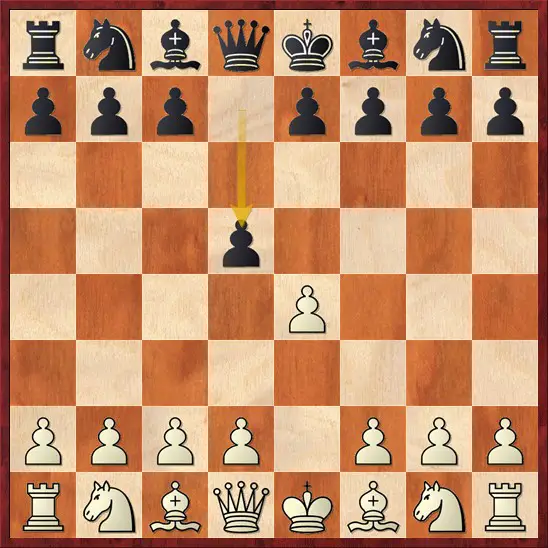
Black can also play 2…Nf6 which entails more risk, as White has some ambitious ways to hold onto his extra pawn.
10. Pirc/Modern defence
The Modern defence, 1.e4 g6 and the Pirc defence 1.e4 d6 are two closely related openings based around the fianchetto of Black’s dark-squared bishop. In both cases, Black allows white to form a broad pawn centre to undermine it later.

These openings may appear passive, but blacks’ lack of space may be deceptive; if white does not take care, they can pack a counter attacking-attacking punch.
11. Owen’s defence
It is an uncommon chess opening defined by the moves 1.e4 b6.
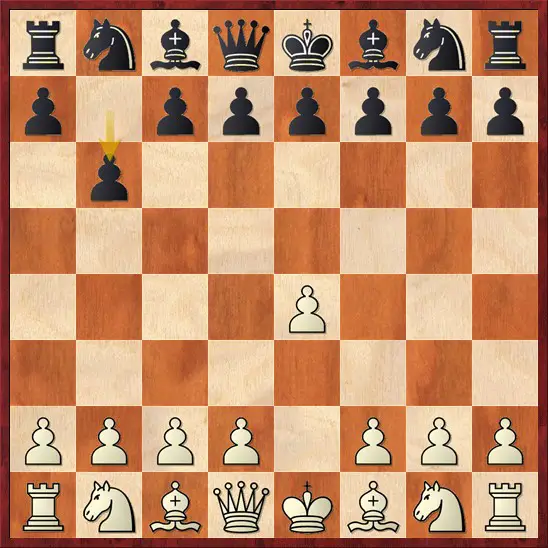
By playing 1….b6 black prepares to fianchetto the queen’s bishop where it will participate in the battle for the centre. The downside of this plan is that white can occupy the centre with their pawns and gain a spatial advantage.
12. Nimzowitsch Defence
This defence starts with 1.e4 Nc6! This opening is an example of a hypermodern chess opening in which Black invites White to occupy the centre at an early stage with pawns and plans to undermine it later.

If you are an aggressive player and want to attack your opponent always, you must play 1.e4. Study games of Garry Kasparov and Bobby Fischer who chose this move always and achieved great success.

